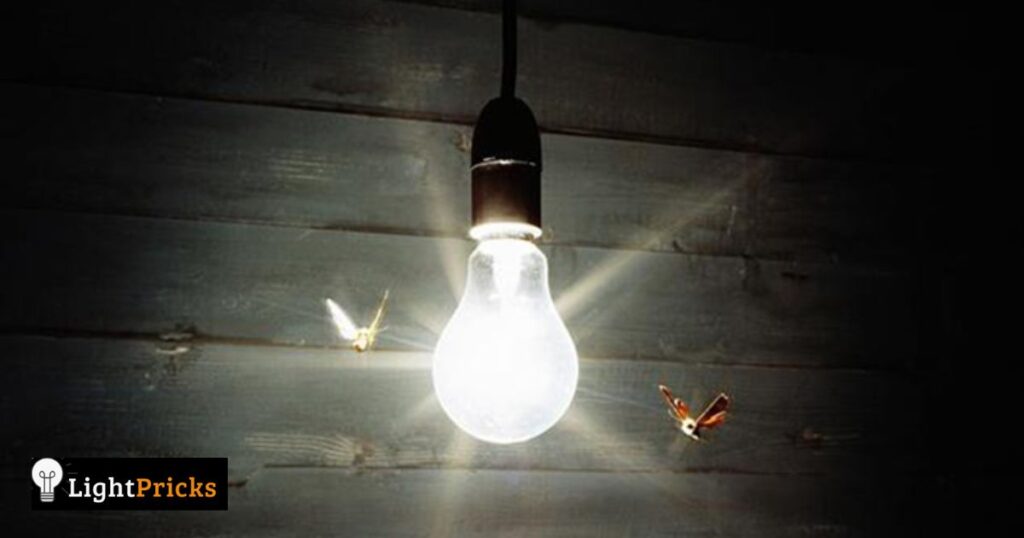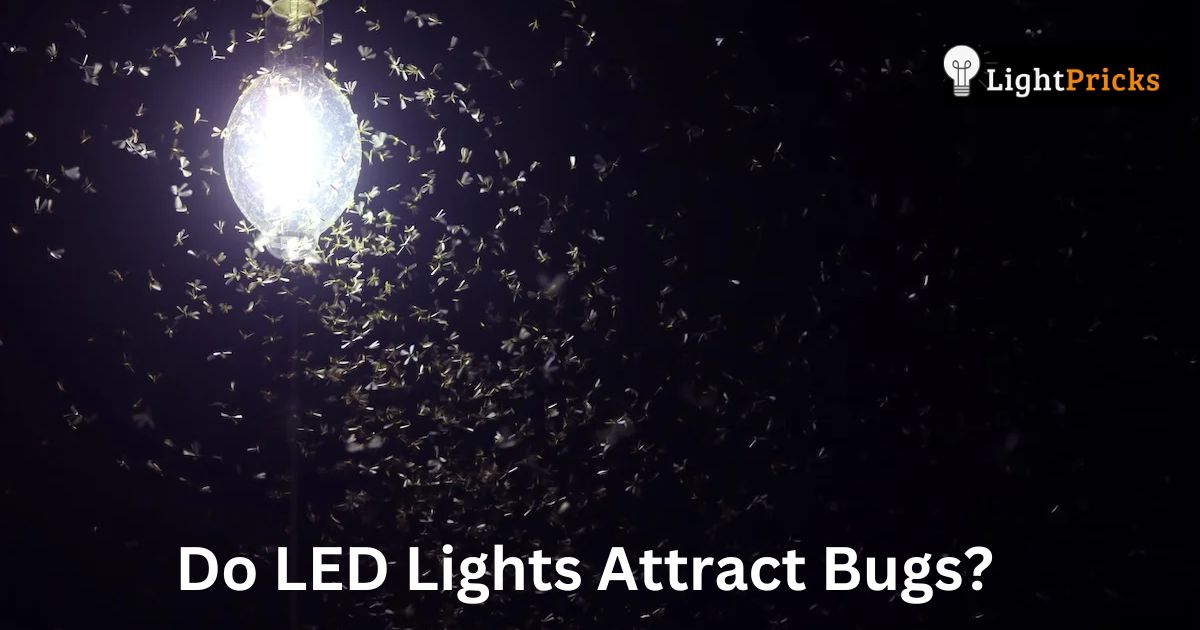Many people now use LED lights at home. LED lights use less power and last longer than old fashioned bulbs. But some folks worry that LED lights may attract more small flying bugs than other kinds of lights. This story will look at what the science says about LED lights and bugs.
On warm summer nights, have you seen tiny flying bugs around outside lights? Maybe a few even flew in the house when you opened the door. Lots of people wonder – do the new energy-saving LED lights somehow make bugs want to come close without meaning to. Let’s look carefully at what the science knows about this. Whether lights bring bugs or not is something many house owners and gardeners talk about.
Now with LED lights, some worry they may attract bugs even more. But it’s not so simple – lights and bug behavior can be complex with many things involved. In this story, we will study different science tests to find out what truly draws bugs and if LEDs are the real reason. Knowing the facts will help everyone make good choices about outside lighting.
Why Are Bugs Attracted To Light?

Many people wonder why small flying bugs are always around lights. Before we say that LEDs make too many bugs come close, we should learn what science knows about this. Bugs like moths travel a lot as the seasons change. They use the moon to find their way, just like old sailors used stars.
Our lights everywhere can mix up bugs. When the light reaches them, bugs think it’s the moon. Lights also feel warm to bugs in cold weather, like the small heat from bulbs. Flowers have colors bugs see too, and lights have some of those colors. There is not one reason bugs are by lights. This story will tell us more about what attracts bugs and what colors of lights keep them away.
Which Is Worse For Bugs LED Or Incandescent Light Bulbs?
Bugs don’t care what kind of light it is. They like what the light looks and feels like more. If you want lights that bugs leave alone, watch the colors and warmth from the bulb. Colors and heat bother bugs more than the kind of bulb. Different bugs notice certain colors better too.
So think about what bugs are by you and what colors pull them in most. If that’s too much work, go with longer colored lights. Bugs also enjoy the warmth from old-style bulbs more than new LED kinds. The less heat and better colors help save you from unwanted bug guests.
Which Types Of Lights Attract Bugs?
- Lights with lots of blue colors and UV (300-400nm) attract the most bugs
- Bugs like lights best between 300-650nm. This covers UV and most colors they see.
- Mercury vapor lights work by changing mercury atoms. They make the wavelengths bugs prefer the most.
- Fluorescent tubes make light from 400-700nm. They produce red, green and blue colors that bugs notice.
- Incandescent bulbs put out warm colors from 2,800-6,200 kelvin. These are colors bugs spot well. The bulbs also feel cozy for bugs.
- Metal halide and sodium lights make pure white and warm white light at 4,250 kelvin. Somehow bugs tend to like them even more than LEDs at the same color.
- All lights give off some UV that bugs use to find flowers. Less UV means fewer bugs around the lights.
- We must reduce the UV to help protect nature and keep bugs from our lights.
What Kinds Of Lights Do Not Attract Bugs?

- Lights with coatings to reduce UV and blue colors attract fewer bugs. These wavelengths usually pull bugs in.
- LED lights made to give off very little UV don’t seem to call bugs over much. Makers design them to keep the heat inside better too.
- Lights with yellow tones are less interesting to bugs. Yellow is outside the colors bugs notice well to find food. Yellow CFL bulbs for example give off longer wavelengths with less energy, so bugs pay them no mind.
- Special tube lights called halogens also give off longer wavelengths bugs don’t care for as much as other colors.
- Lights using less power attract fewer bugs. Weaker bulbs put out less warmth that lures some insects close.
- Warmer colored lights in the kelvin scale may do a better job than cooler tones of keeping bugs away, even if some still have blues insects notice.
- No light keeps all bugs completely away. But choosing the right kind for the area based on these tips can really cut down on unwanted insect visitors.
What Are The Best Lights To Repel Bugs?
Some lights do better than others at keeping bugs away. Lights with warm yellow or white colours don’t attract bugs like other colder colours. Bugs can’t spot food as well under these lights so they stay elsewhere. LED bulbs that give off hardly any UV rays are also good. UV is a colour we can’t see but bugs use it to find food and each other. If lights don’t have much UV, bugs won’t sit by them as much.
Lights that don’t use a lot of power work too because weaker bulbs make less warmth that draws bugs close. Outside lights with UV-blocking coatings help too since they stop the UV that calls bugs over like food is ready. Together these types of lights keep bugs from visiting unwanted places.
Some Ways To Prevent Bugs From Being Attracted To LED Lights:

- Use yellow or warm colored LED lights. Bugs don’t notice these colors as much.
- Get LEDs that only make a few colors. Limit blue and UV rays that call bugs over.
- Remove any standing water near outside lights. Mosquitoes breed in puddles.
- Hang bug zappers near lights to catch bugs before they move indoors.
- Seal cracks where bugs like spiders and roaches sneak in to get at lights.
- Put lights on timers or sensors so they’re only on when needed.
- Place natural bug repellents like citronella or growing plants near lights.
- Install window screens and nets so bugs can’t get inside to bother light bulbs.
- Use ceiling fans. Their spinning air will mess with bugs and keep rooms cooler.
- Clean dust from lights regularly so they don’t collect dirt that bugs enjoy. Replace bulbs when needed.
Keeping lights tidy, limiting what colors they make and sealing entry points will help LEDs stay bug-free.
FAQ’s
What are the best lights to avoid bugs?
The incandescent light bulb attracted the most insects, followed by the CFL and halogen globe lights. The cool-colored LED light pulled in fewer insects than those two. The specially designed bug light performed better than the cool LED. The warm LED bulb attracted the least number of insects and was the overall best performer.
Do LED lights attract spiders?
We said spiders don’t come to LED lights themselves. But they wait close to lights to catch other bugs that do like the light. If you want fewer of all these, use yellow or warm LEDs. These colors don’t pull insects toward the light as much.
What LED lights do bugs hate?
Tests found bugs liked LED lights the least, whether warm or cool colors. Yellow lights may do even better keeping bugs away. Scientists say yellow and red bulbs don’t pull insects to the light as much as regular white lights do.
Final Thoughts
Do LED Lights Attract Bugs? Here shows that lights attract bugs mostly due to how bright they are, not the type of bulb. LEDs don’t seem to pull in more bugs than other lights. Colors like blue and UV from 300-400nm get bugs’ attention the most. But warmer colored lights or yellow bulbs may bother bugs less. Weaker bulbs that give off less heat also help.
No light will stop all bugs. But picking the right kind of light for the area, like LEDs that limit unwanted colors and aren’t too bright, can help cut down on bug visitors. Following other tips like cleaning lights often also helps keep buzzing guests away. Now you can enjoy the benefits of LEDs without worrying as much about small flying pests being around the lights.













